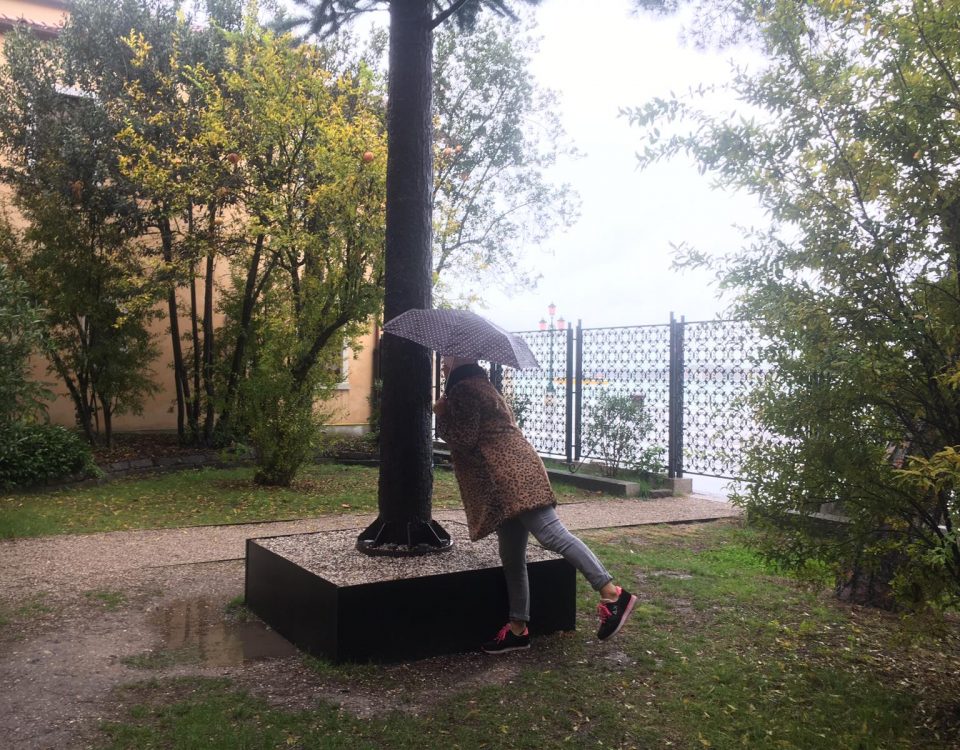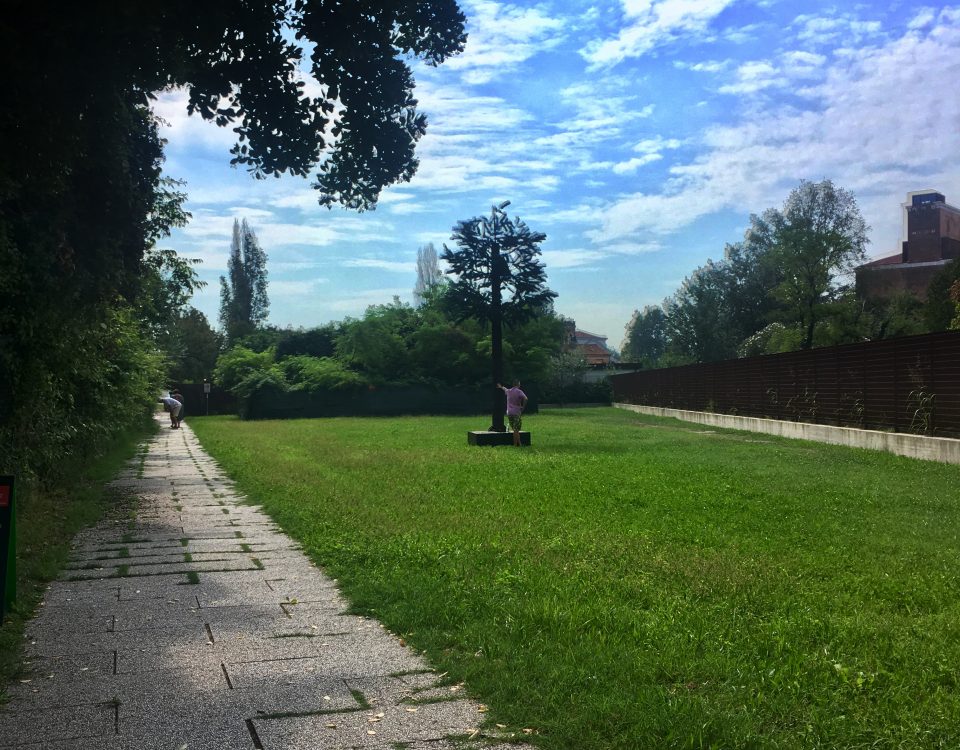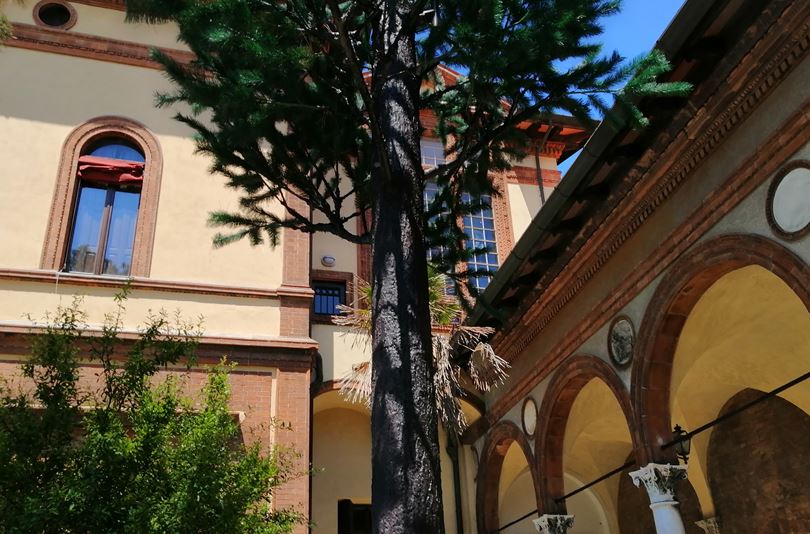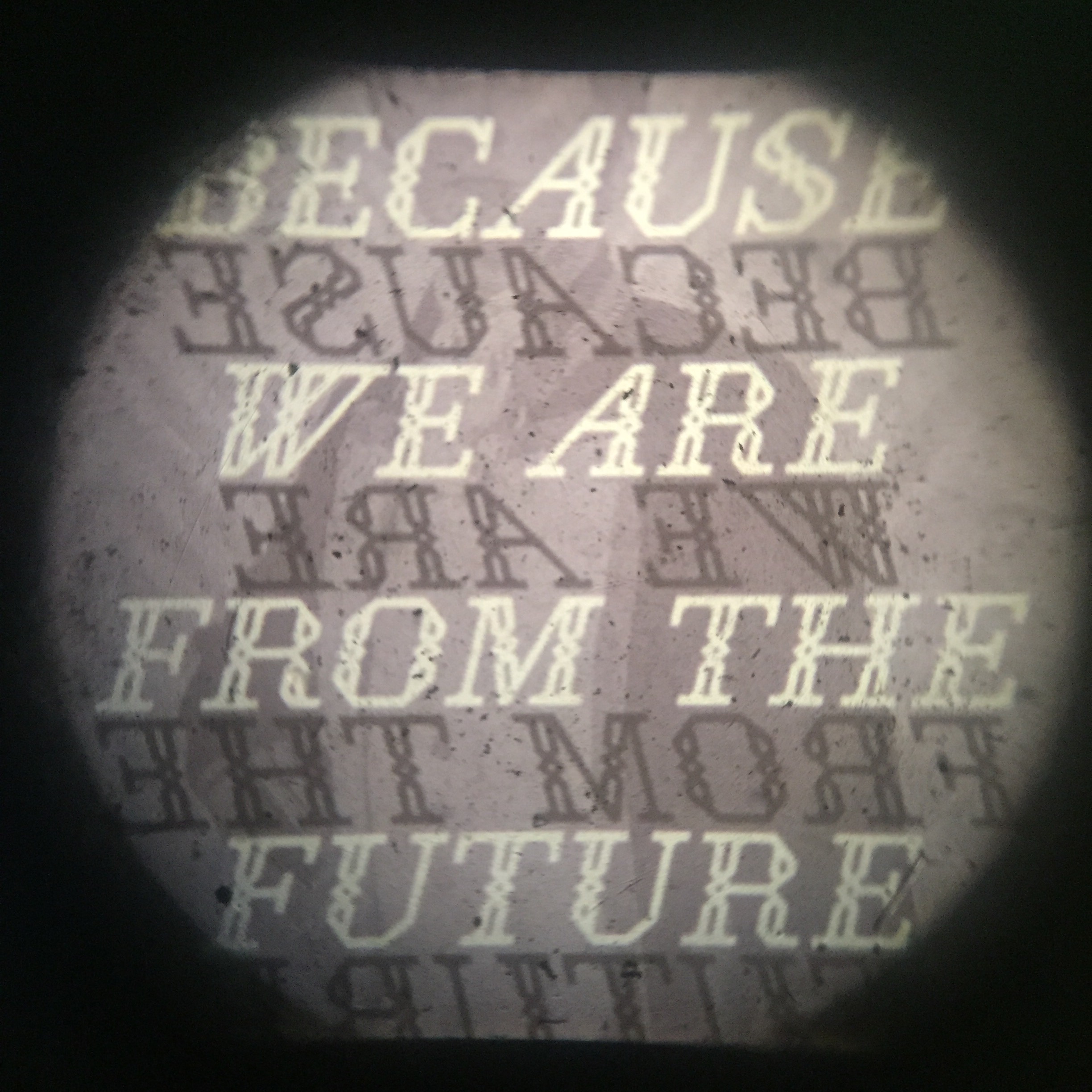
Because we are from the future…
July 13, 2017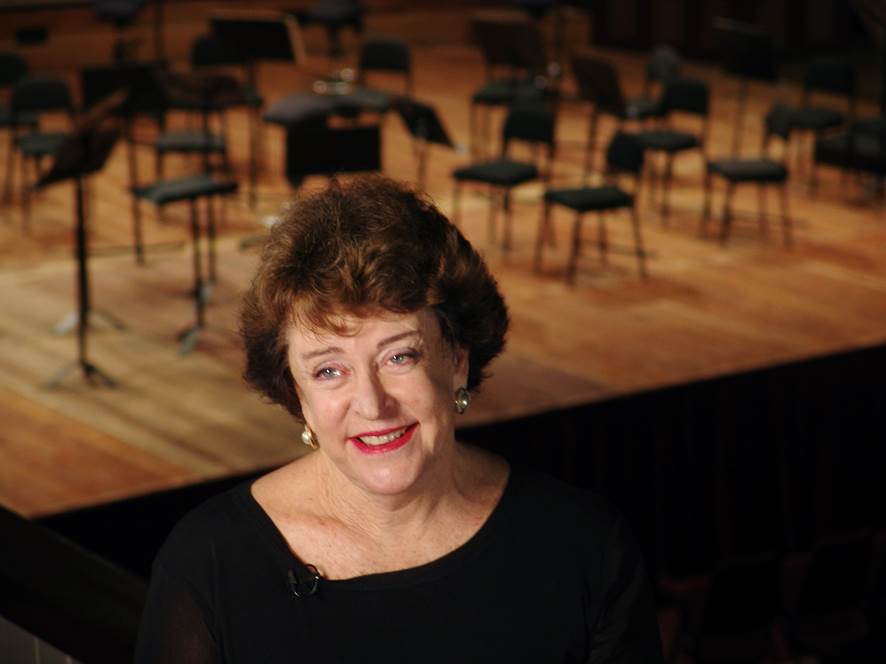
Commissioner announced for Biennale Arte 2019
September 11, 2017Documenta 14 to Biennale Arte 2017
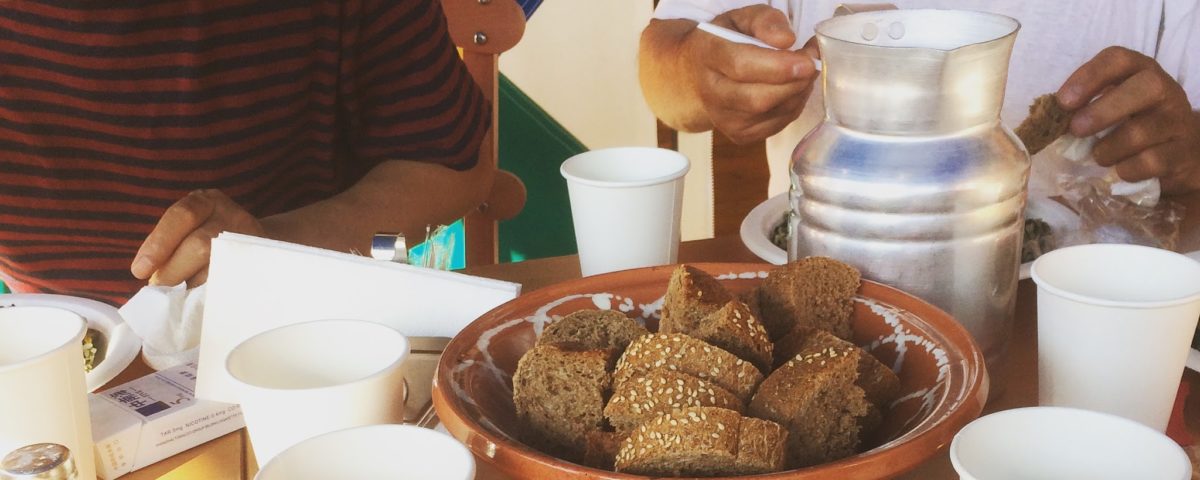
My dinner companions at Rasheed Araeen’s project in Kotzias Square.
Zoe Hoeberigs is our third Exhibition Attendant for Lisa Reihana: Emissaries. Our attendants each spend approximately six weeks in Venice between May and November 2017. Zoe blogs (below) about her experience travelling to the Biennale Arte 2017 from Documenta 14.
I was lucky enough to travel to Greece before arriving in Venice. The works I encountered in Athens as part of Documenta 14 spoke clearly of the economic and social hardships Greece has felt over the past years. This was further enhanced by the anger scrawled on the walls of buildings throughout the city (I’ve never seen graffiti like it).
A key venue in Athens – EMST National Museum of Contemporary Art – was where I came across a work by Pavel Brăila. Understated in appearance, it was memorable in the humble but clever way it addressed the disparity between rich and poor. The artist presented a fridge on a marble plinth, inscribed with the title The Golden Snow of the Sochi Olympics 2014. The fridge contained snow in jars, taken from stockpiles kept in the various venues of the 2014 Sochi Winter Olympics.
Snow was scarce during the Games so reserves were kept to top up spots where it was needed. The event cost $51 billion to stage and much of that was spent on reacting to the unpredictable weather. At the end of the Games, Russia had topped the medal table, taking 33 of the total 98 medals awarded. Brăila’s contribution to the exhibition was a simple, provocative statement.
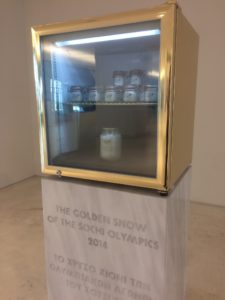
Frozen water worth its weight in gold. Photo: Zoe Hoeberigs
I was also fortunate to experience Rasheed Araeen’s project in Kotzias Square. The project invited visitors and locals to share a meal in the temporary dining pavilion erected in this historic commercial centre.
Over dinner I had a conversation with a Greek economist who knew New Zealand well (even sighting Bill English as a friend). We talked about what he had seen play out over the past decade in his homeland. Simply stated, it had been, and was still, very bleak. He spoke passionately about his country and the changes needed to “get things working properly again”.
As the conversation continued, he became more interested in what I shared about the housing crisis in Auckland, something he was yet to hear about. His understanding of New Zealand was as a stable and affluent economy, with strong socialist goals. It was unbelievable to him that we had unattainable property prices, poverty and families without homes. In contrast, Athens has few issues with homelessness, despite the other problems facing its population. Rasheed Araeen wanted this project to give participants a time to “sit together and enjoy a meal while reflecting on possible scenarios for social change.” My evening fully realised the artist’s intentions. It was a beautiful experience that continues to resonate with me. The simple act of breaking bread, and enjoying a conversation, gave me a much deeper understanding of that place and its people – something all good artworks do.
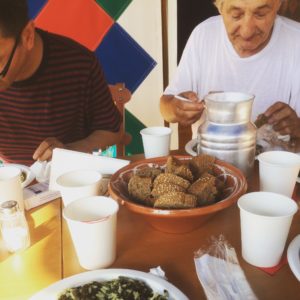
My dinner companions at Rasheed Araeen’s project in Kotzias Square. Photo: Zoe Hoeberigs
It was in complete contrast that I visited Damien Hirst’s Treasures from the Wreck of the Unbelieveable on my first day in Venice. The exhibition was like nothing I had seen before – enormous, audacious and completely over-the-top. Over two venues, Palazzo Grassi and Punta della Dogana, Hirst presents a gargantuan display of ‘relics’, touted as the lost collection of Aulus Calidius Amotan. The latter was a freed 1st-century slave who spent a fortune on hundreds of objects, all of which have been underwater for 2,000 years after his ship Apistos (unbelievable in Greek), sank in the Indian Ocean.
They are, of course, fakes. The ‘relics’ include historical items modelled from a number of cultures – Grecian, Mayan, Chinese, Egyptian (including a marble pharaoh that resembles Pharrell Williams), alongside statues of Transformer robots, Disney characters and Barbie figures. All are perfectly sculpted in bronze, marble and various precious metals, including rooms full of gold statuettes. [Reviews can be found in the Arts News, The Telegraph (UK) and the New York Times]
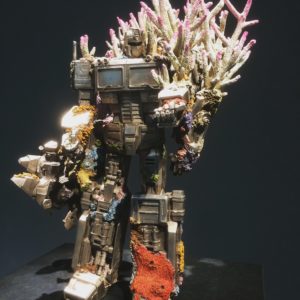
More than meets the eye at Treasures from the Wreck of the Unbelievable by Damien Hirst. Photo: Zoe Hoeberigs
The works are undoubtedly incredible examples of stellar craftsmanship, intricately rendered and presented to an impeccable standard (over 1,000 suppliers from Italy, Germany, South Africa and the United States were involved in making the show). The scale of the exhibition and the fact the ‘relics’ are duplicated in three ways (the Original still encrusted with coral; the Treasure a restored version for museum display; and a Copy a reproduction of the original, sometimes at an increased scale) meant their lustre quickly lost its shine. The objects turned gimmicky and cold. I was left pondering not the beauty of the sculptures, or the premise of the exhibition, but just how much money was spent on creating this huge volume of work. In an interview for the BBC, Hirst disclosed the exhibition had cost him more than £50 million.
The exhibition was difficult to enjoy after my experience in Greece, just the week before, and the conversations I had there. The works I saw in Athens, and others since in Venice, show a universal commitment by artists to use their practice to spotlight social, environmental and political issues relevant to them and their communities. The collaborative projects brought people together to explore pertinent issues and provided a platform for different voices to be heard.
In a recent interview Hirst stated “When you’re an artist, everything you do you think is about the world we are living in today” and further explained that the exhibition is a reflection of the world’s current ‘alternate facts’ and ‘post-truth’ political climate. I found this intention difficult to believe since he started this exhibition 10 years ago, when Donald Trump was still a reality TV star. Rather, Treasures from the Wreck of the Unbelievable reflects an artist who is paying little attention to the conversations everyone else is having, choosing to focus on personal fantasy and ignoring the world we live in today.
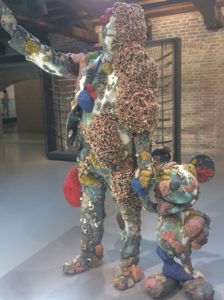
A self-portrait of Hirst with Mickey Mouse. Photo: Zoe Hoeberigs

